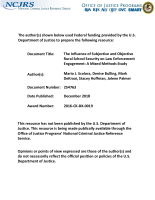Sustained Impact on Parenting Practices: Year 7 Findings from the Healthy Families New York Randomized Controlled Trial
Journal
Prevention Science
Date Published
2020
Agencies
NIJ-Sponsored



